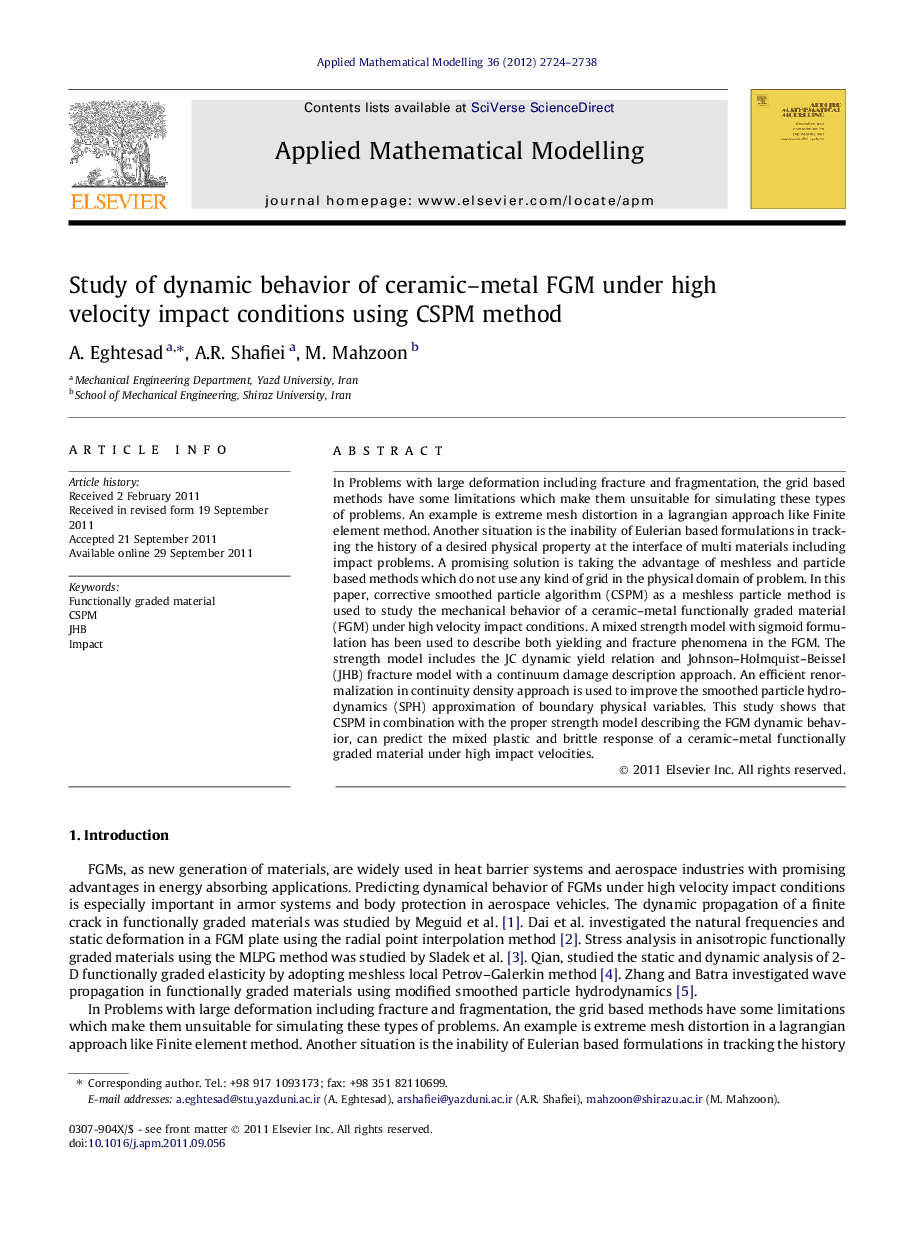| Article ID | Journal | Published Year | Pages | File Type |
|---|---|---|---|---|
| 1705358 | Applied Mathematical Modelling | 2012 | 15 Pages |
In Problems with large deformation including fracture and fragmentation, the grid based methods have some limitations which make them unsuitable for simulating these types of problems. An example is extreme mesh distortion in a lagrangian approach like Finite element method. Another situation is the inability of Eulerian based formulations in tracking the history of a desired physical property at the interface of multi materials including impact problems. A promising solution is taking the advantage of meshless and particle based methods which do not use any kind of grid in the physical domain of problem. In this paper, corrective smoothed particle algorithm (CSPM) as a meshless particle method is used to study the mechanical behavior of a ceramic–metal functionally graded material (FGM) under high velocity impact conditions. A mixed strength model with sigmoid formulation has been used to describe both yielding and fracture phenomena in the FGM. The strength model includes the JC dynamic yield relation and Johnson–Holmquist–Beissel (JHB) fracture model with a continuum damage description approach. An efficient renormalization in continuity density approach is used to improve the smoothed particle hydrodynamics (SPH) approximation of boundary physical variables. This study shows that CSPM in combination with the proper strength model describing the FGM dynamic behavior, can predict the mixed plastic and brittle response of a ceramic–metal functionally graded material under high impact velocities.
